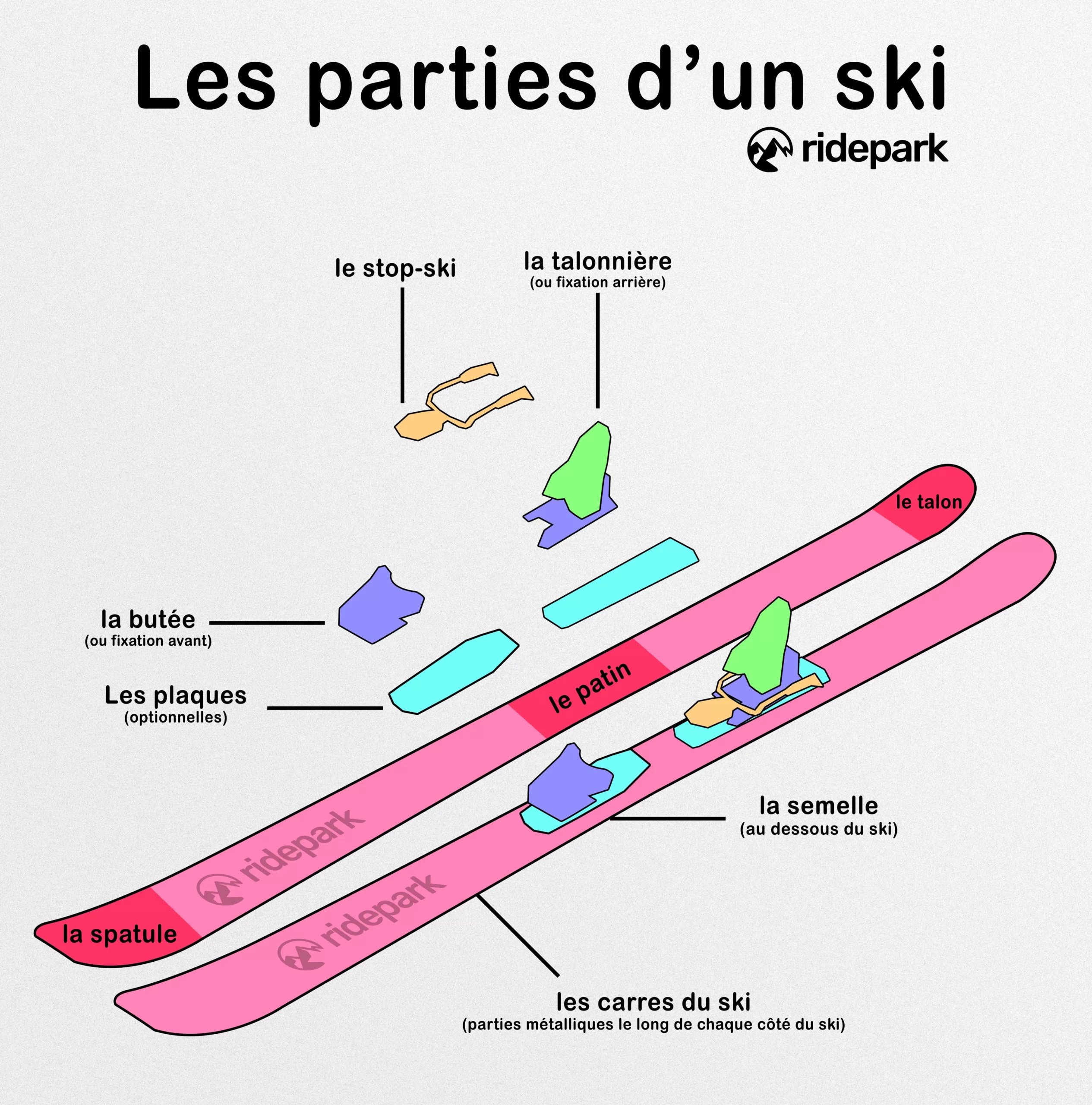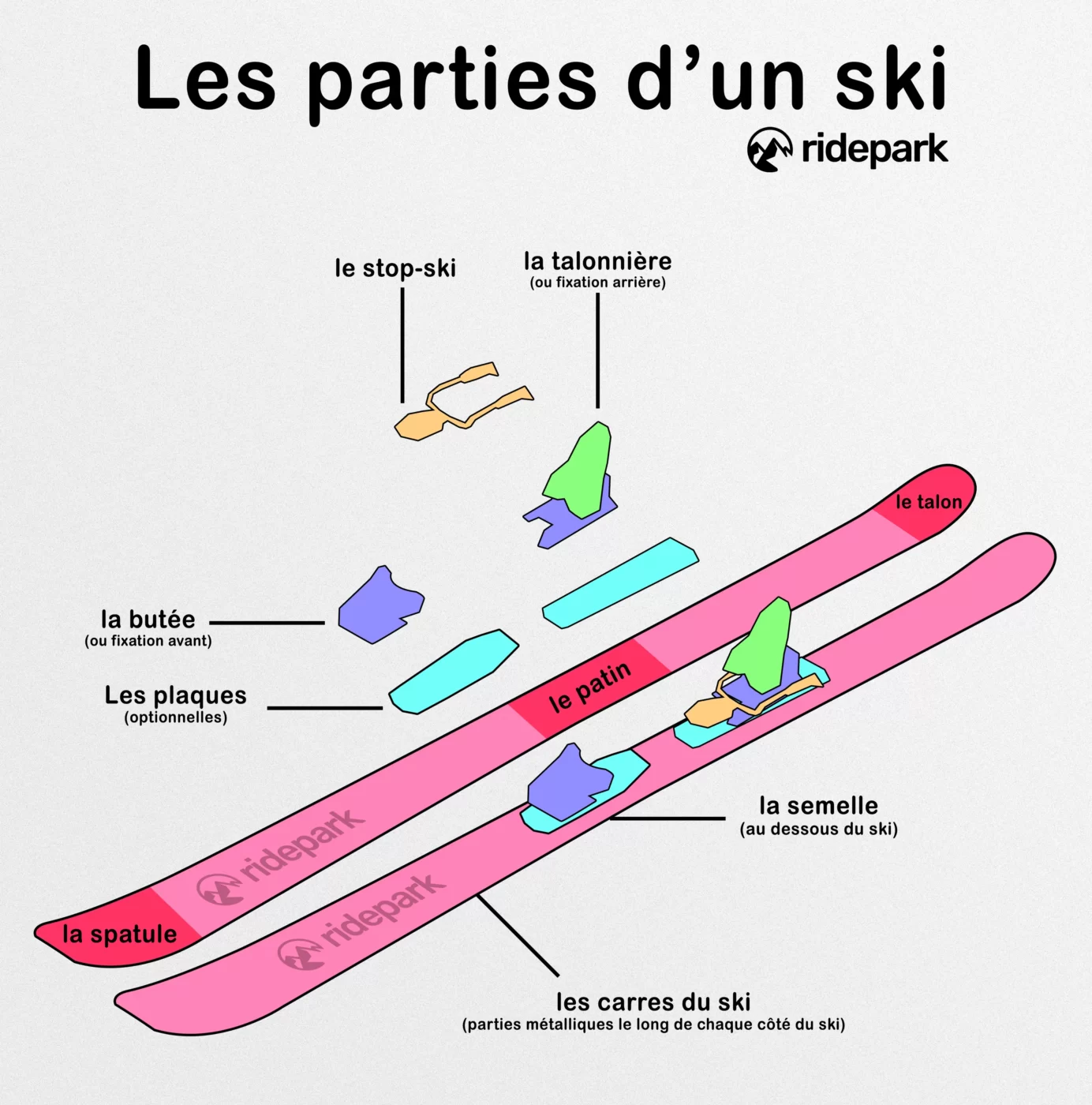
Different parts of a ski
1. The tip
The tip, located at the front of an alpine ski, is a widened and upward-curved section. It is designed to enhance floatation on snow and help the ski initiate turns. The shape and size of the tip can vary depending on the type of ski.
- Main function: Helps steer the ski and improves floatation.
- Importance: Essential for maneuverability and control, especially in deep snow.
2. The waist
The waist refers to the narrowest part of the ski, located directly under the binding. Right under your foot, in fact.
This is the area that contacts the snow when skiing straight. The width of the waist directly affects the ski’s maneuverability and its ability to float in powder or carve on groomed runs. For example, it is slightly wider on all-mountain skis than on classic piste skis.
- Main function: Provides balance and stability.
- Importance: Crucial for ski performance, influencing both speed and turn precision.
3. The tail
The tail is the rear part of the ski, symmetrical to the tip, but generally less elevated. It plays a key role in finishing turns and maintaining straight-line stability. It’s also raised on freestyle skis to allow skiing switch.
- Main function: Stabilizes the ski at the end of a turn. Enables skiing switch.
- Importance: Allows smooth and controlled exit from turns.
4. The edges
The edges are the metal strips running along the sides of the ski. They bite into snow and ice, providing grip and control during turns.
- Main function: Ensures grip while turning on hard snow.
- Importance: Vital for safety and precision, especially on icy slopes.
5. The base
The base of the ski, in direct contact with the snow, is made of a synthetic and relatively soft material. It can be maintained with waxing to enhance glide and protect the ski.
- Main function: Maximizes glide.
- Importance: Directly impacts speed and descent smoothness.
6. The toe piece
The toe piece is the front component of the ski binding, where the front of the boot is secured. It is designed to release during a fall, thereby freeing the foot to help prevent injury.
- Main function: Skier safety via release during falls.
- Importance: Essential for preventing serious injuries.
7. The heel piece
The heel piece is the rear part of the binding that locks the boot’s heel in place. Like the toe piece, it is designed to release when necessary for skier safety.
- Main function: Secures the heel and releases during falls.
- Importance: Complements the safety mechanism provided by the toe piece.
8. The brake
The brake is a safety device that prevents the ski from sliding too far when it comes off. It is located under the heel piece and folds up when the boot is clipped in.
- Main function: Stops the ski from running away.
- Importance: Prevents accidents and makes it easier to recover the ski after a fall.
9. The plates
Plates, often inserted between the skis and the bindings, can increase the skier’s height above the skis, thereby improving edge leverage for better turn control. Plates are not found on all types of skis.
- Main function: Improves force transmission and control.
- Importance: Can enhance performance, particularly for experienced skiers.




Your comments and questions